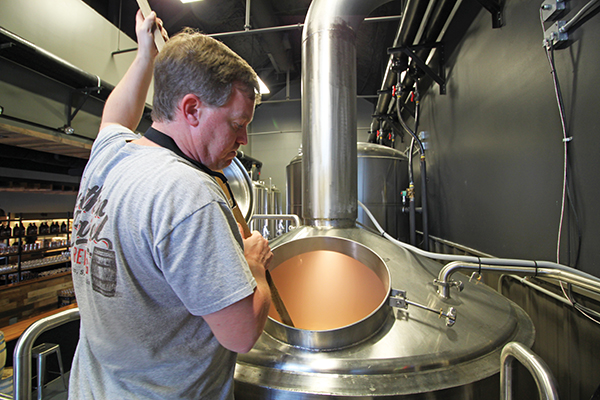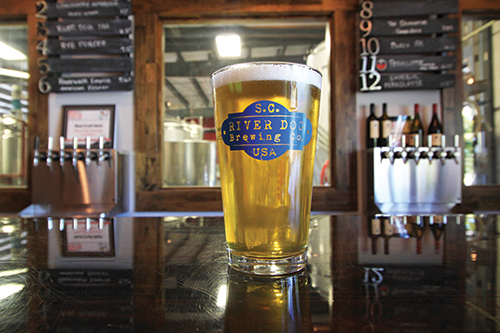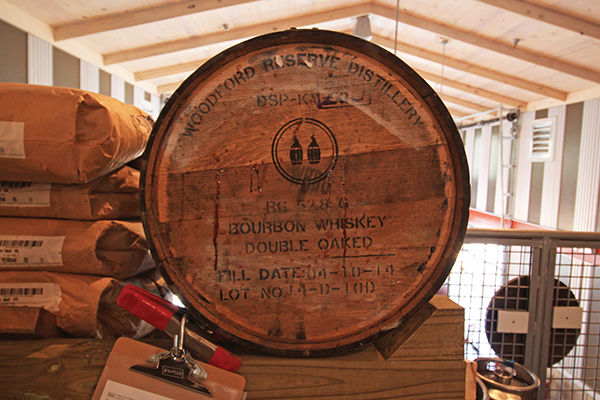A peanut butter stout and vanilla bean cream ale are just two of the concoctions crafted around town.

But you wouldn’t know that or get to try these tasty brews unless you strode inside River Dog Brewing Co. or Southern Barrel Brewing Co., where brewers are coming up with craft beers unique to our Carolina coast.

After working for a few years at River Dog, Brown knew he wanted to do things on an even smaller scale, which would allow him to play and get more unique hops and boutique grains—ingredients that brewers wouldn’t want to use on a large scale because it would ramp up costs significantly. After all, he, like many brewers in the area, wants to craft creative, artful brews.
“Bringing that level of creativity and boutiqueness to Old Town was so intoxicating because there’s nothing like that in Bluffton,” Brown admits.
With their Hoppin’ John IPA, State of Mind Saison, Oyster Town Brown and a few bourbon barrels to age new brews.
John Federal heads the brewery at River Dog out in Okatie. He started doing small batches only available on tap at their bar. Federal plans to use these craft brews to educate guests on the different hops and malts.
Southern Barrel is already on the small batch bandwagon—out of 12 beers on tap, about four are small batch rotations. Federal and Walter Trifari, the brewmaster at Southern Barrel, even have their own SMaSH (Single Malt and Single Hops) beer series showing customers how the two ingredients interact with each other.
“I already knew it was an uphill battle here in Bluffton, as far as the culture of beer versus the rest of the country, and I was okay with that. Our job here is just to keep educating people on beer,” Trifari explains.
The Brew Biz

In some states, breweries can bypass the second tier and self-distribute. South Carolina prevents this. Breweries, such as Southern Barrel and River Dog have retailer licenses. But, they must send anyone looking to get a keg to their distributor. They are only allowed to sell glasses of beer, six-packs and growlers.
These regulations were put in place during Prohibition and these antiquated laws aren’t conducive to small businesses. They allow big breweries to get bigger at the expense of newcomers. the little guy pays higher costs for production, ingredients and packaging. But even with these hurdles, craft beer sales continue to grow.
While overall beer sales have been trending down, craft beer sales continue to grow. Though macro breweries have a hold on the beer market, craft breweries have risen to the challenge.
“Macro breweries have learned over the years how to sell quite a bit of beer.
They know how their packaging colors work and where it needs to be placed in the cooler,” says Trifari. “They will even make beers that look and, they think, taste like craft beer and try to get their name off the whole package so people think it’s a craft.”
Creative—some say sneaky—marketing has allowed macro breweries to produce products that look like craft brews. It’s also trained individuals to think that beers are best served at the coldest temperatures. Although true for some, it is certainly a myth in many cases.
As Trifari puts it, cheaper beer doesn’t taste very good when it warms up. That’s why companies insist on frozen beer glasses and ice-cold beer. The colder the beer, the less you taste.
“We’re trying to help people understand that good flavor comes from good ingredients, taking time to make the beer and that here we are making the beer, as part of the community,” Trifari notes.
“Just supporting a local brewery is huge and it’s simpler than most people realize,” says Trifari.
“Actually buying some beer from us goes a long way; it’s going to help my kids play soccer or help some other kids get braces. It’s going to impact the local community more than people think.”
While buying beer plays a big part, getting out, and enjoying quality time is just as important.
“The benefit is more people get interested in what beer can be,” Federal explains.
After all, each brewer is like a different chef. Each of Bluffton’s brewers has worked their way from home brewing to brew pubs and big production breweries. Then they scaled back to smaller settings, just miles off the May River, to concoct appealing creations.
All Photos by Andrea Six


